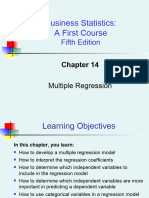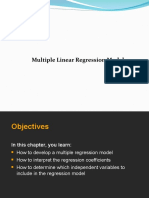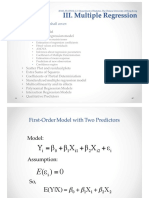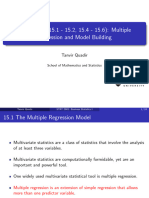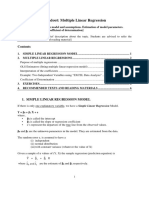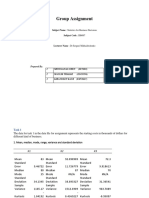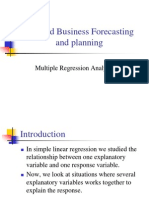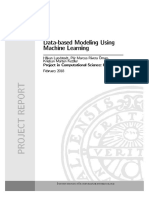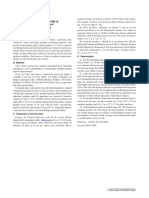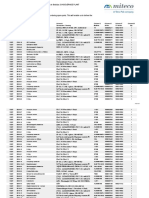0% found this document useful (0 votes)
13 views34 pagesMultiple Regression
The document introduces multiple regression analysis, focusing on the relationship between one dependent variable and multiple independent variables. It provides an example of pie sales influenced by price and advertising, along with statistical outputs from Excel and Minitab, including regression equations and significance tests. Key metrics such as R-squared values and confidence intervals are discussed to evaluate the model's effectiveness and the significance of individual predictors.
Uploaded by
pavi.premsai.spamCopyright
© © All Rights Reserved
We take content rights seriously. If you suspect this is your content, claim it here.
Available Formats
Download as PDF, TXT or read online on Scribd
0% found this document useful (0 votes)
13 views34 pagesMultiple Regression
The document introduces multiple regression analysis, focusing on the relationship between one dependent variable and multiple independent variables. It provides an example of pie sales influenced by price and advertising, along with statistical outputs from Excel and Minitab, including regression equations and significance tests. Key metrics such as R-squared values and confidence intervals are discussed to evaluate the model's effectiveness and the significance of individual predictors.
Uploaded by
pavi.premsai.spamCopyright
© © All Rights Reserved
We take content rights seriously. If you suspect this is your content, claim it here.
Available Formats
Download as PDF, TXT or read online on Scribd
/ 34
